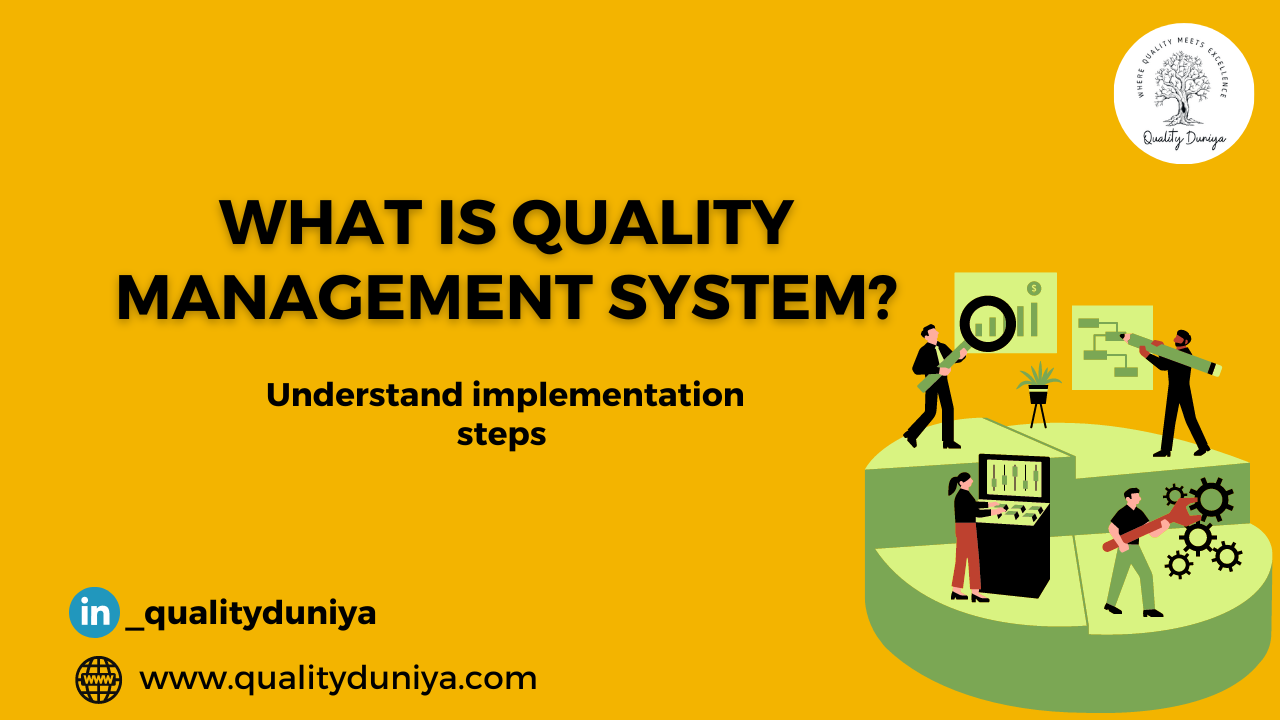Introduction to Quality Management Systems (QMS): In today's highly competitive business landscape, ensuring quality across all operations is essential for achieving success and maintaining customer satisfaction. Quality Management Systems (QMS) play a crucial role in helping organizations achieve and maintain high-quality standards consistently.
In this blog post, we will delve into the fundamentals of QMS, including its purpose, benefits, and key components such as quality policies, procedures, and objectives. By the end, you'll have a solid understanding of QMS and its significance in driving organizational excellence.
What is a Quality Management System (QMS)?
A Quality Management System (QMS) refers to a set of
policies, procedures, and processes implemented within an organization to
ensure that products, services, and internal operations consistently meet or
exceed predefined quality standards. It provides a framework that enables
businesses to monitor, control, and improve their quality-related activities
systematically.
Purpose of a QMS:
The primary purpose of a QMS is to establish a structured
approach to quality management that aligns with an organization's objectives.
Here are some key purposes of implementing a QMS:
a. Consistency: A QMS helps maintain consistent quality by
setting clear standards and guidelines for all processes, from product
development to service delivery.
b. Customer Satisfaction: By focusing on quality, a QMS aims
to meet customer expectations and enhance satisfaction levels, leading to
increased loyalty and positive word-of-mouth.
c. Compliance: QMS frameworks often integrate
industry-specific regulations and standards, ensuring organizations stay in
compliance with legal requirements and industry best practices.
d. Continuous Improvement: QMS fosters a culture of continuous
improvement by providing mechanisms to monitor performance, identify areas for
enhancement, and implement corrective actions.
Benefits of Implementing a QMS?
Adopting a robust QMS offers numerous benefits to
organizations. Let's explore some key advantages:
a. Enhanced Product/Service Quality: A QMS helps
organizations deliver consistent high-quality products or services, enhancing
customer satisfaction and loyalty.
b. Improved Efficiency: By streamlining processes and
reducing errors, a QMS enhances operational efficiency, leading to cost savings
and increased productivity.
c. Better Risk Management: QMS frameworks integrate risk
assessment and mitigation strategies, allowing organizations to identify and
manage potential risks effectively.
d. Increased Stakeholder Confidence: With a QMS in place,
businesses demonstrate their commitment to quality, earning trust from
customers, partners, and stakeholders.
e. Regulatory Compliance: QMS frameworks often align with
industry-specific regulations, ensuring organizations remain compliant and
avoid costly penalties.
Key Components of a QMS?
A comprehensive QMS comprises various interconnected
components that work together to achieve quality objectives. Here are three
fundamental components:
a. Quality Policies: Quality policies outline an
organization's commitment to quality and serve as a foundation for the QMS.
They establish quality objectives and provide guidance for decision-making
across all levels of the organization.
b. Procedures: Procedures define the specific steps and
methods required to execute various processes consistently. They serve as
practical guidelines for employees, ensuring uniformity and adherence to
quality standards.
c. Objectives and Metrics: Setting measurable quality
objectives allows organizations to track their progress and gauge the
effectiveness of the QMS. Metrics and key performance indicators (KPIs) provide
quantifiable data to monitor and improve quality performance continually.
Conclusion
Quality Management Systems (QMS) are indispensable for
organizations striving to maintain high-quality standards and deliver
exceptional products or services consistently. By establishing a structured
approach to quality management, organizations can enhance customer satisfaction,
optimize efficiency, and mitigate risks effectively. The key components of QMS,
including quality policies, procedures, and objectives, provide the necessary
framework for achieving and maintaining quality excellence.
Remember, implementing a QMS is not a one-time endeavor; it requires continuous monitoring, evaluation, and improvement. Embracing a culture of quality and integrating it into the organizational DNA will enable businesses to stay ahead in today's dynamic marketplace.
You can also read: What is Quality Management System? Understand implementation steps.







